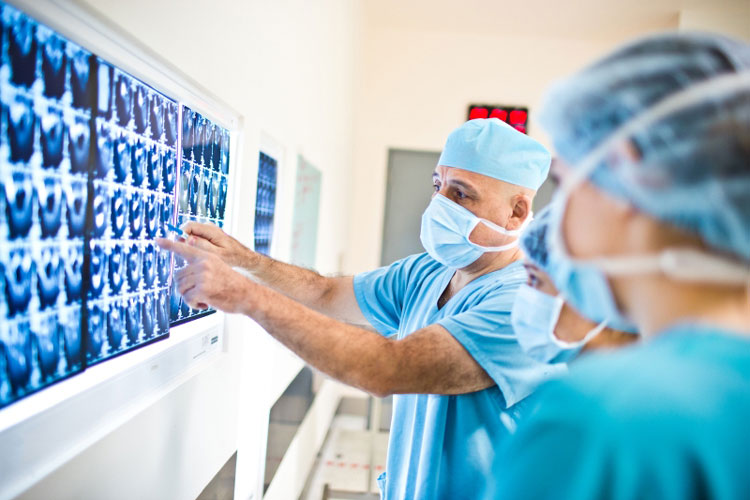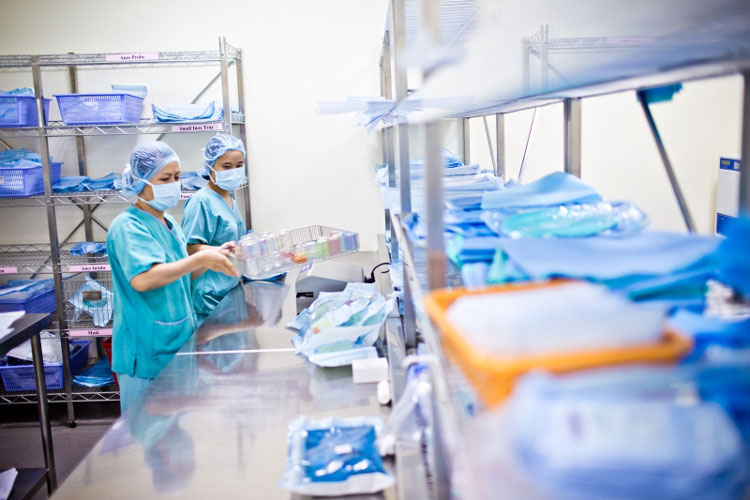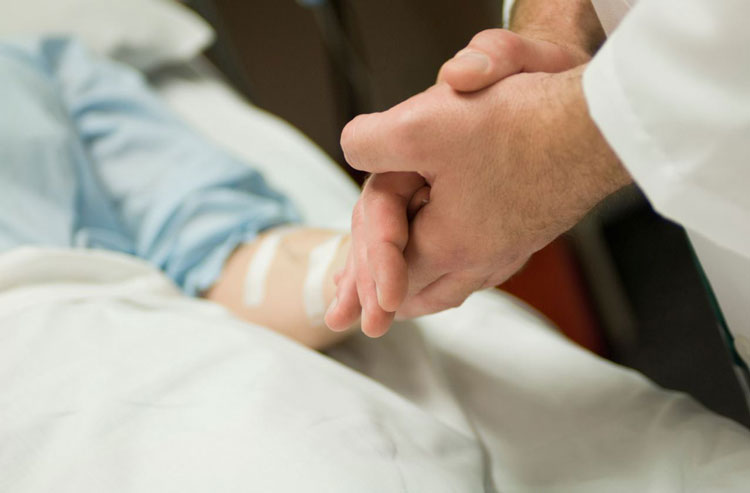Does any patient ever have the chance of following the operating equipment sterilization procedure? None! So why is it so important to Mr. Pascal Villoing, OT-CSSD-DW Manager – FV Hospital, who has undertaken 4 major surgeries in his life? The answer is quite simple and humanity: To ensure safety for the patient.

Pascal Villoing has a stern appearance but in fact he is a very witty French man. Seeing his agility, it would be difficult to imagine that he has been on the operating table several times. He did not hesitate to show some of the remaining scares of these surgeries:
I was a bit startled at hearing of the words “surgery equipment”. Actually when I think of sterilizing the surgery room, I only have the thoughts of the nurses’ and doctors’ hands or the clean, dust-free machines and area.
“Sterilizing surgical instruments is essential!” He emphasized. Then he led me seeing the hospital’s Central Sterile Supply Department (CSSD) and explaining everything that no one sees, no one knows but can affect the life of the patient.
Every detail is related to life and death

Just imagine what would happen even if the doctor is very good, the surgery goes well, the nursing team adheres exactly to all the required procedures but the surgical instruments are not correctly reprocessed and not sterile? The patient will surely be infected and will have to undergo several problems: like reoperation, longer stay in hospital, use of massive treatment of antibiotics, associated side effects and complication, higher expenses, disability and even death.
Hospital infections really have been a persistent problem for a long time over the world. According to the research from WHO in 2016, the rate of bacterial infections in emergency department resuscitation in Vietnam is nearly 30%!
Mr. Pascal explains that just one small disruption in the tools treatment can cause a surgical site infection! Therefore, the surgical tools’ reprocessing for sterilization is a major step of the infection control in the hospitals to ensure safe treatments and cares for the patients.
Being asked how to measure the clean of the surgical instruments? This is his answer: The most ideal condition is that no bacteria are left on the tools after the sterilization and this can only be done by a thorough respect of the cleaning process; cleaning process that starts in the operating room just after the surgery. We have to keep in mind that we can sterilize only clean devices. Not following strict cleaning rules would not drastically reduce the burden of the microorganisms (bacteria, virus, yeast…) and would compromise the efficiency of the sterilization. Pre-cleaning, cleaning or disinfection process not done or not correctly done and some microorganisms will find the way to auto protect themselves and undergo sterilization without being destroyed. They will “hibernate” until being in a suitable environment, like the surgical wound, and will develop and colonize again to infect part or entire body of a patient.
The sterilization process at FV ensures the destruction of the microorganisms on the medico-surgical devices. In the different dedicated rooms of the C.S.S.D, where the equipment and staff flow is strictly organized, washer-disinfectors, ultra-sonic washer, dryers, sealers and steam sterilizers are operated following strict processes; the different steps are monitored, recorded and the sterilization validated by trained staff.
“The doctors pay attention to the treatments of the disease, our task is to ensure the correct operation of the equipment in the purpose to provide quality products to support the surgical team and for the patient’s safety. All of this associated to a correct storage, handling and usage of the devices will be in favor of an effective control of the infections and the reduction of the use of antibiotics after the surgery. Realization of the antibiotic-minimizing program is what FV Hospital is pursuing with for the ultimate goal the patient health.” said Mr. Pascal.
Even a tiny tool also needs to be accessed following the procedure
After each operation or treatment, every instrument is soaked in a detergent-disinfectant solution from the operating room and transferred to the C.S.S.D washing area. Many people don’t know that this solution is constantly replaced and not reused for the whole day.
When the soaking time is reached, the staff hand-washes the tools, rinses with water before putting them in the washer-disinfector.
Once disinfection phase is completed, the tools are dried and the staff, in the CSSD packaging room, is controlling each instrument’s function and integrity, sometime with the help of an illuminated magnifier, and lubrication is performed when needed. Any discrepancy is declared to the direct line manager and the tool replaced.
Following listings, the nurses reset and wrap the surgical sets.
Next, the sets are loaded in the steam sterilizer for the sterilization phase.
When finished, the sterilizer is unloaded and the sterilization cycle validated after control of the operation’s record and inspection of the integrity of the packaging.
All processes from the usage to the sterilization and disinfection, washing, packaging, testing and re-use, are tracked and recorded. This is very impressive! “Monthly, we randomly pick up a toolkit that has been sterilized and send it to the laboratory for a swab test. It’s a way for us to check whether our process is effective and safe.” Pascal added.
It seems to have too many processes and procedures in controlling the safety of medical instruments! I shared my thoughts with Pascal, he nodded affirmatively. “This is necessary to ensure sterilization and prevention of cross-contamination in patients. Therefore, all nursing staffs have been in a thorough training to master the process steps and understand thoroughly about the tools and equipment that they are using.
The man who holds the patient’s hand going through life and death

For the past 11 years, Mr. Pascal has spent the entire time at the hospital to monitor, inspect and supervise the operating procedures and staff training at FV – the JCI international standard hospital. Although the work seems to be regular and monotone, he is always agile and happy. He doesn’t hide his pride for FV’s nursing team.
What he always tells his team is: “Be strong, be dedicated, and be proud!”. Because nurse is the one who does a lot of things for the recovery of the patient. Who is taking care of the patient, before during and after a surgery? Who supports them when they are anxious or in pain? Who is taking time to listen to them and answering their request? Who is taking time to inform and educate them? The nurses – the quiet, resistant and patient heroes. They come early to the operating room to get everything ready for the surgery, to ensure a smooth and safe surgical activity, to provide a professional assistance to the surgeons and anaesthesiologists, then leave late after finishing the instrument sterilization process.
Mr. Pascal said with a joy sparkling in his eyes.
(To be continued)

 Vi
Vi 












